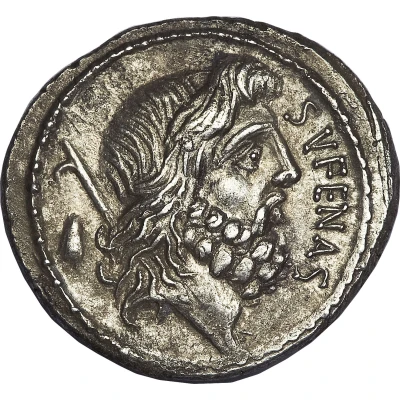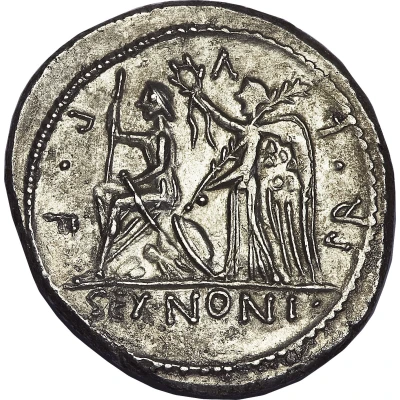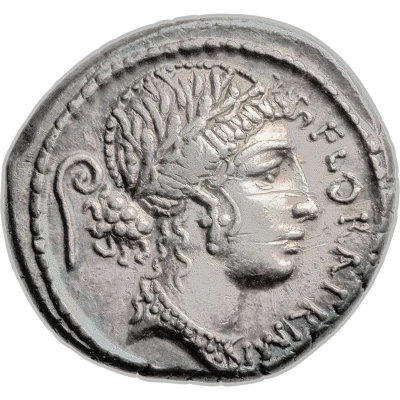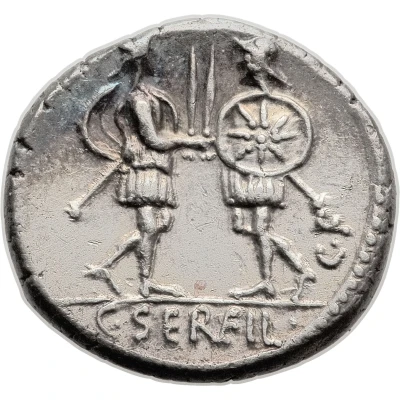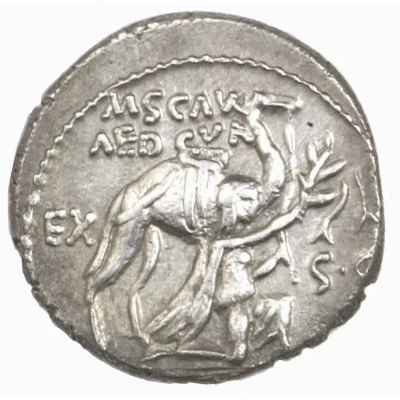
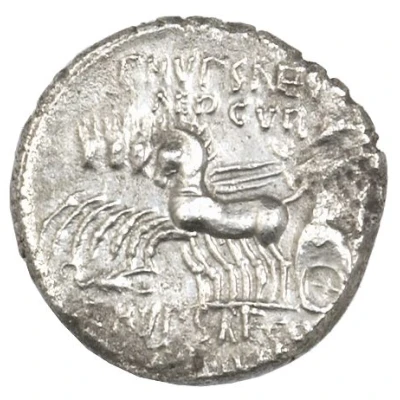

Denarius Aemilia:Marcus Æmilius Scaurus and Publius Plautius Hypsaeus 58 BC
58 BC year| Silver | 3.4 g | 18 mm |
| Issuer | Rome › Roman Republic (509 BC - 27 BC) |
|---|---|
| Period | Republic (509 BC - 27 BC) |
| Type | Circulating commemorative coin |
| Year | 58 BC |
| Value | Denarius (1) |
| Currency | Denarius of 16 Asses (141 – 27 BC) |
| Composition | Silver |
| Weight | 3.4 g |
| Diameter | 18 mm |
| Shape | Round (irregular) |
| Technique | Hammered |
| Orientation | Variable alignment ↺ |
| Demonetized | Yes |
| Updated | 2024-10-06 |
| Numista | N#378507 |
|---|---|
| Rarity index | 80% |
Reverse
Jupiter in quadriga left brandishing thunderbolt; scorpion below horses.
Script: Latin
Lettering:
P HVPSEVS
AED CVR
CAPTVM
C HVPSAE COS
PREIVER
Unabridged legend: Publius Hypsaeus Aedilis Curulis Gaius Ypsaeus Consul Preivernum Captum
Translation: Publius Hypsaeus Aedile Curule, Consul Gaius Ypsaeus captured Privernum
Comment
The scene on the obverse depicts the surrender of Aretas III of Nabataea to Scaurus.
The gens Aemilia, originally written Aimilia, was one of the most ancient patrician houses at Rome. The family was said to have originated in the reign of Numa Pompilius, the second King of Rome, and its members held the highest offices of the state, from the early decades of the Republic to imperial times. The Aemilii were probably one of the gentes maiores, the most important of the patrician families.
The obverse commemorates the surrender of Aretas III, The King of Nabatean Arabs in 62 BC to Scaurus himself. First instance of a moneyer publicizing an event from his own career on the coinage.
The reverse inscription refers to Gaius Plautius Decianus (who is here falsely named Ypsaeus) and the ancient town of Privernum which he captured.
Interesting fact
One interesting fact about this coin is that it features the first known depiction of a Roman triumph, which was a grand ceremony held to celebrate a military victory. The coin's design shows a triumphal procession, led by a victorious general, with soldiers, musicians, and other participants following behind. This coin provides valuable insight into the cultural and historical significance of the Roman Republic.
Price
| Date | Mintage | VG | F | VF | XF | AU | UNC |
|---|---|---|---|---|---|---|---|
| ND (-58) | - | - | - | - | - | - |
Values in the table are based on evaluations by sales realized on Internet platforms. They serve as an indication only for Denarius (Aemilia:Marcus Æmilius Scaurus and Publius Plautius Hypsaeus) (58 BC) coin.
